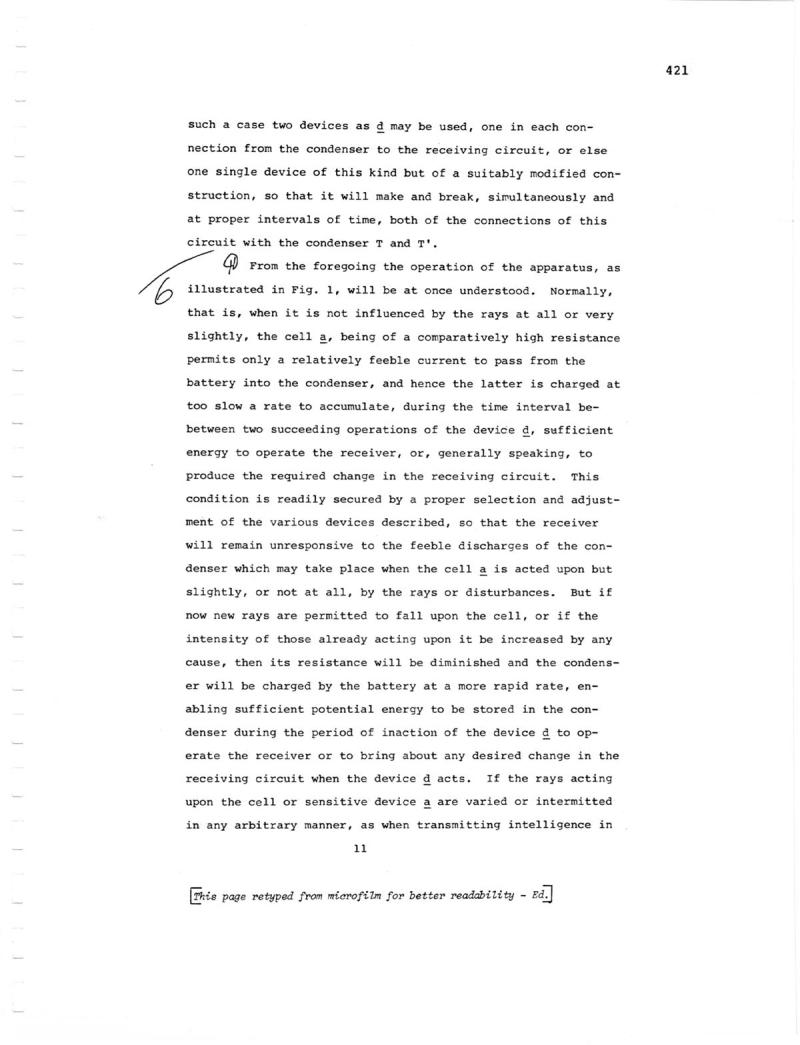
Nikola Tesla Patents
T } F such a case two devices as d may be used, one in each connection from the condenser to the receiving circuit, or else one single device of this kind but of a suitably modified construction, so that it will make and break, simultaneously and at proper intervals of time, both of the connections of this circuit with the condenser T and T'. From the foregoing the operation of the apparatus, as illustrated in Fig. 1, will be at once understood. Normally, that is, when it is not influenced by the rays at all or very slightly, the cell a, being of a comparatively high resistance permits only a relatively feeble current to pass from the battery into the condenser, and hence the latter is charged at too slow a rate to accumulate, during the time interval bebetween two succeeding operations of the device d, sufficient energy to operate the receiver, or, generally speaking, to produce the required change in the receiving circuit. This condition is readily secured by a proper selection and adjustment of the various devices described, so that the receiver will remain unresponsive to the feeble discharges of the condenser which may take place when the cell a is acted upon but slightly, or not at all, by the rays or disturbances. But if now new rays are permitted to fall upon the cell, or if the intensity of those already acting upon it be increased by any cause, then its resistance will be diminished and the condenser will be charged by the battery at a more rapid rate, enabling sufficient potential energy to be stored in the condenser during the period of inaction of the device d to operate the receiver or to bring about any desired change in the receiving circuit when the device d acts. If the rays acting. upon the cell or sensitive device a are varied or intermitted in any arbitrary manner, as when transmitting intelligence in 11 This page retyped from microfilm for better readability - Ed.] 421
